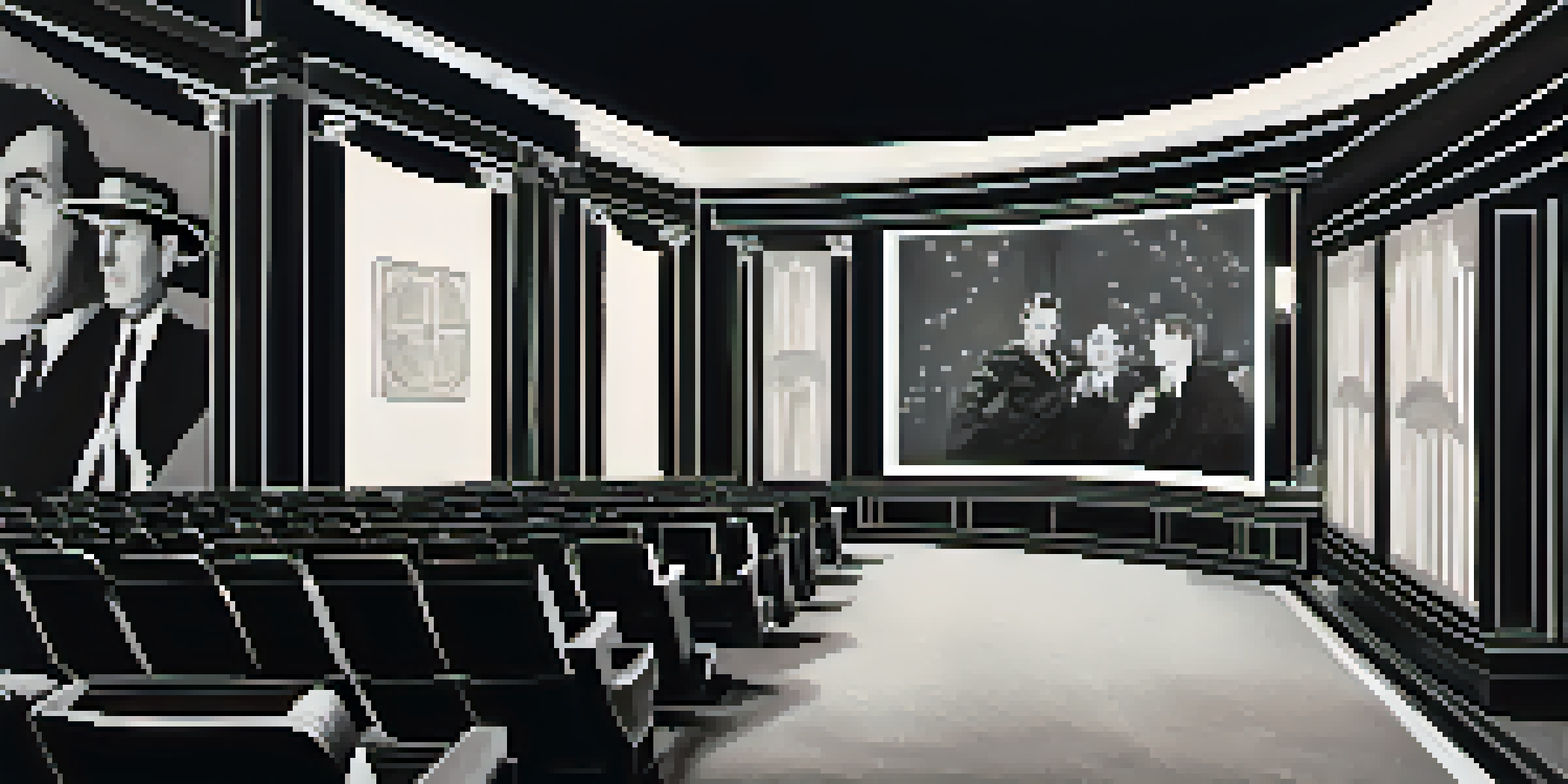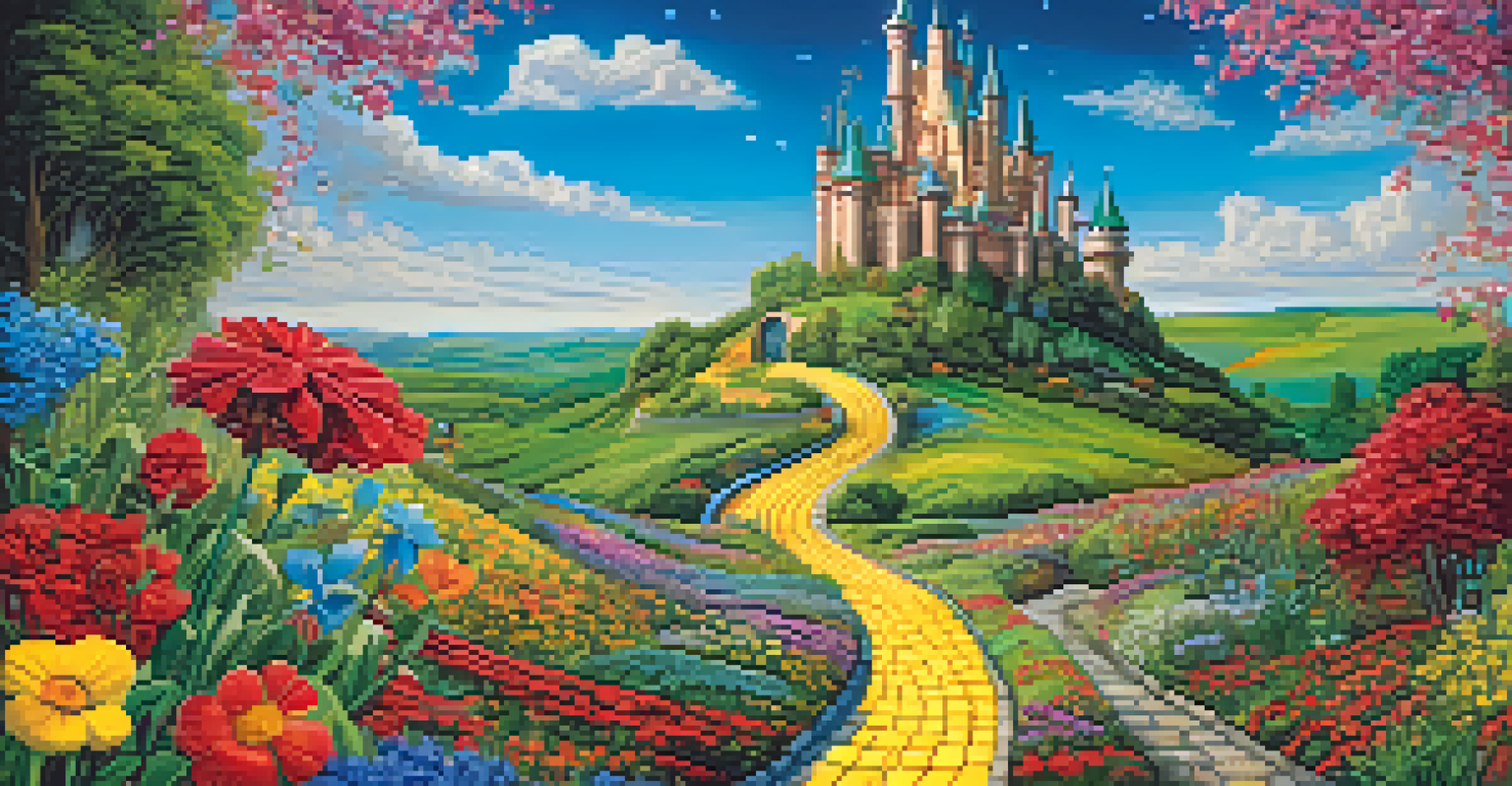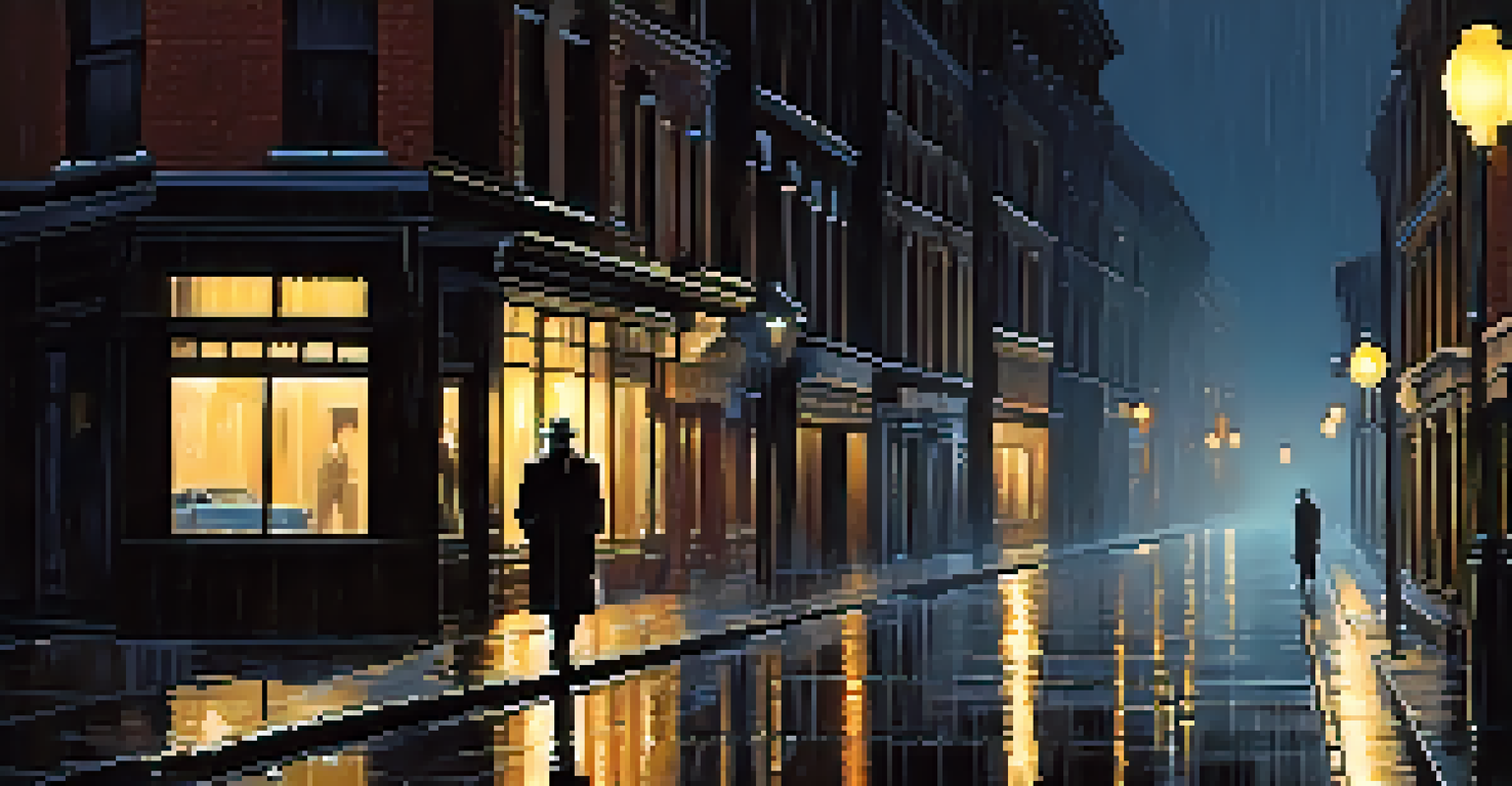The Evolution of Color Usage in Film from Silent Era to Now

The Silent Era: A World in Black and White
In the silent film era, color was a luxury few could afford. Movies like 'The Birth of a Nation' and 'The Cabinet of Dr. Caligari' were predominantly shot in black and white, relying on lighting and shadows to convey mood and emotion. However, some filmmakers experimented with color through techniques like hand-tinting, which added a splash of vibrancy to specific scenes, albeit at a labor-intensive cost.
Color is the keyboard, the eyes are the harmonies, the soul is the piano with many strings.
This period laid the groundwork for visual storytelling, where the audience's imagination painted the colors of the narrative. While these early films lacked the full spectrum of color, they demonstrated how important visual cues are in evoking emotions. The use of color was not yet mainstream, but it sparked a curiosity that would eventually lead to its evolution.
As the silent era progressed, the desire for more visually dynamic storytelling grew. The limitations of black and white films prompted filmmakers to seek innovative ways to incorporate color, paving the path for future advancements in film technology.
The Introduction of Technicolor: A Game Changer
The 1930s heralded a groundbreaking shift with the introduction of Technicolor, a process that allowed for vibrant, full-color films. 'The Wizard of Oz' and 'Gone with the Wind' showcased this technology, capturing audiences with their dazzling visuals. Technicolor transformed the cinematic landscape, making color an essential element of storytelling rather than an afterthought.

This new technique opened doors for filmmakers to create more immersive worlds, where every hue contributed to the narrative. Directors began to use color symbolically, with specific palettes evoking different emotions or themes. For instance, the vibrant colors in 'The Wizard of Oz' contrasted starkly with the sepia tones of Kansas, highlighting the transition from mundane reality to fantastical adventure.
Color Evolution in Film History
The journey from black and white to color films showcases significant technological advancements and creative storytelling techniques.
However, Technicolor was not without its challenges. The process was expensive and required careful planning, often leading to a limited number of films adopting it initially. Yet, its impact was undeniable, setting a precedent for future innovations in color filmmaking.
Color as a Narrative Device in Film Noir
As the film industry evolved, so did the use of color in genres like film noir, where color was utilized to enhance the mood and atmosphere. Movies like 'Double Indemnity' and 'Laura' employed a muted color palette to create a sense of unease and tension, reflecting the darker themes of the genre. This clever use of color demonstrated that it could serve as more than just a visual enhancement; it could tell a story.
The use of color is a way to express emotion and tell stories without words.
Directors and cinematographers began to experiment with shadows and harsh lighting alongside color, creating a unique visual language that spoke to the complex emotions of the characters. The interplay of light and dark, coupled with selective color choices, helped to define the identity of film noir. Each shade contributed to the overall feeling of suspense and intrigue.
This period marked a significant milestone in cinematic history, where color was no longer a mere aesthetic choice but a fundamental part of storytelling. The innovative approaches seen in film noir paved the way for future filmmakers to explore the emotional depth that color could bring to their narratives.
The Rise of Digital Color Grading in Modern Cinema
The advent of digital filmmaking in the late 20th century revolutionized how color is used in movies. With the rise of digital color grading, filmmakers gained unprecedented control over the hues and tones of their films. This technology allows for the manipulation of color in post-production, enabling directors to create a specific mood or aesthetic with ease, as seen in films like 'Mad Max: Fury Road.'
Digital color grading has expanded the possibilities for storytelling, allowing filmmakers to experiment with bold color choices and unique visual styles. For instance, the vibrant colors in 'The Grand Budapest Hotel' serve not just as eye candy but also as a reflection of the film's whimsical and nostalgic themes. The precise control over color creates an immersive experience that draws audiences deeper into the narrative.
Symbolism and Emotional Depth
Filmmakers leverage color symbolism to evoke specific emotions and enhance narrative themes, enriching the audience's viewing experience.
However, this accessibility has also led to a homogenization of color palettes across many films. As directors and cinematographers adopt popular trends, the individuality of color usage can sometimes get lost. Nonetheless, the ability to utilize color in such a dynamic way has fundamentally changed filmmaking, making color a vital part of modern storytelling.
Symbolism in Color: The Psychology of Color in Film
Throughout film history, color has been used symbolically, tapping into the psychology of color to evoke specific feelings and associations. For example, the color red often symbolizes passion or danger, while blue can convey sadness or tranquility. Filmmakers have harnessed these associations to deepen their narratives, guiding audience emotions without a single word spoken.
This psychological aspect of color usage is evident in films like 'Schindler's List,' where the iconic red coat stands out against a black-and-white backdrop, highlighting innocence amidst horror. Such deliberate choices enhance the storytelling experience, allowing viewers to connect with the characters on a more emotional level. The colors chosen can amplify themes, making them resonate long after the film has ended.
Understanding the symbolism of color adds another layer to film analysis, enriching discussions on a film's themes and character development. As filmmakers continue to explore the depths of color psychology, audiences can expect more nuanced storytelling that challenges perceptions and evokes deeper reflections.
Cultural Influences on Color Choices in Film
As cinema has evolved, so too have cultural influences that shape color choices in film. Different cultures have unique associations with colors, which filmmakers often reflect in their work. For instance, in many Asian cultures, red symbolizes good fortune and joy, while in Western cultures, it often represents love or anger. These cultural nuances add richness and depth to storytelling, allowing filmmakers to connect with diverse audiences.
Films like 'Crouching Tiger, Hidden Dragon' showcase how color can be steeped in cultural significance, using shades to enhance themes and character arcs. The lush greens and vibrant reds not only enhance the visual experience but also connect to cultural traditions and beliefs. This thoughtful application of color can elevate a film from mere entertainment to a profound cultural commentary.
Cultural Impact on Color Choices
Cultural associations with color influence filmmakers' choices, adding depth and allowing for greater connection with diverse audiences.
As globalization continues to shape the film industry, filmmakers are increasingly aware of these cultural nuances, creating works that resonate across borders. This blending of influences leads to a richer tapestry of storytelling, where color becomes a universal language that transcends cultural barriers.
The Future of Color in Film: Trends and Innovations
Looking ahead, the future of color in film is poised for exciting innovations and trends. With advancements in technology, filmmakers will likely explore even more immersive ways to engage audiences. Virtual reality (VR) and augmented reality (AR) are emerging as platforms where color can play a pivotal role in storytelling, offering experiences that are not just viewed but felt.
Additionally, as audiences become more visually sophisticated, filmmakers may experiment with unconventional color choices and techniques. This could lead to a resurgence of hand-painted elements or the integration of artificial intelligence in color design, creating unique visual experiences. The potential for creativity is boundless, and with it comes the opportunity to push the boundaries of narrative and visual expression.

Ultimately, the evolution of color in film reflects broader cultural and technological shifts. As filmmakers continue to innovate, the use of color will remain a vital component of storytelling, enhancing our emotional connection to the characters and narratives we love.